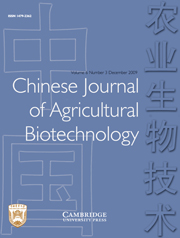No CrossRef data available.
Article contents
PCR for the detection of the anti-herbicide genes in genetically modified organisms
Published online by Cambridge University Press: 12 February 2007
Abstract
Genetically modified organisms (GMOs) containing anti-herbicide genes account for more than 75% of all GMO and the proportion is increasing. The polymerase chain reaction (PCR) method has proved to be an invaluable tool for the specific and sensitive detection of genetically modified material in foodstuffs and PCR screening for the presence of transgenic components in food is becoming a routine method in modern food analysis. In this study, the five kinds of the anti-herbicide genes (bar, pat, cp4-epsps1, cp4epsps2 and gox) were examined by PCR in four kinds of genetically modified crops (soy, maize, cotton and rape). Results indicate that the method was sensitive, specific and credible, and that all genetically modified and approved crops containing the anti-herbicide genes can be examined by this method.
- Type
- Research Article
- Information
- Copyright
- Copyright © China Agricultural University and Cambridge University Press 2006


